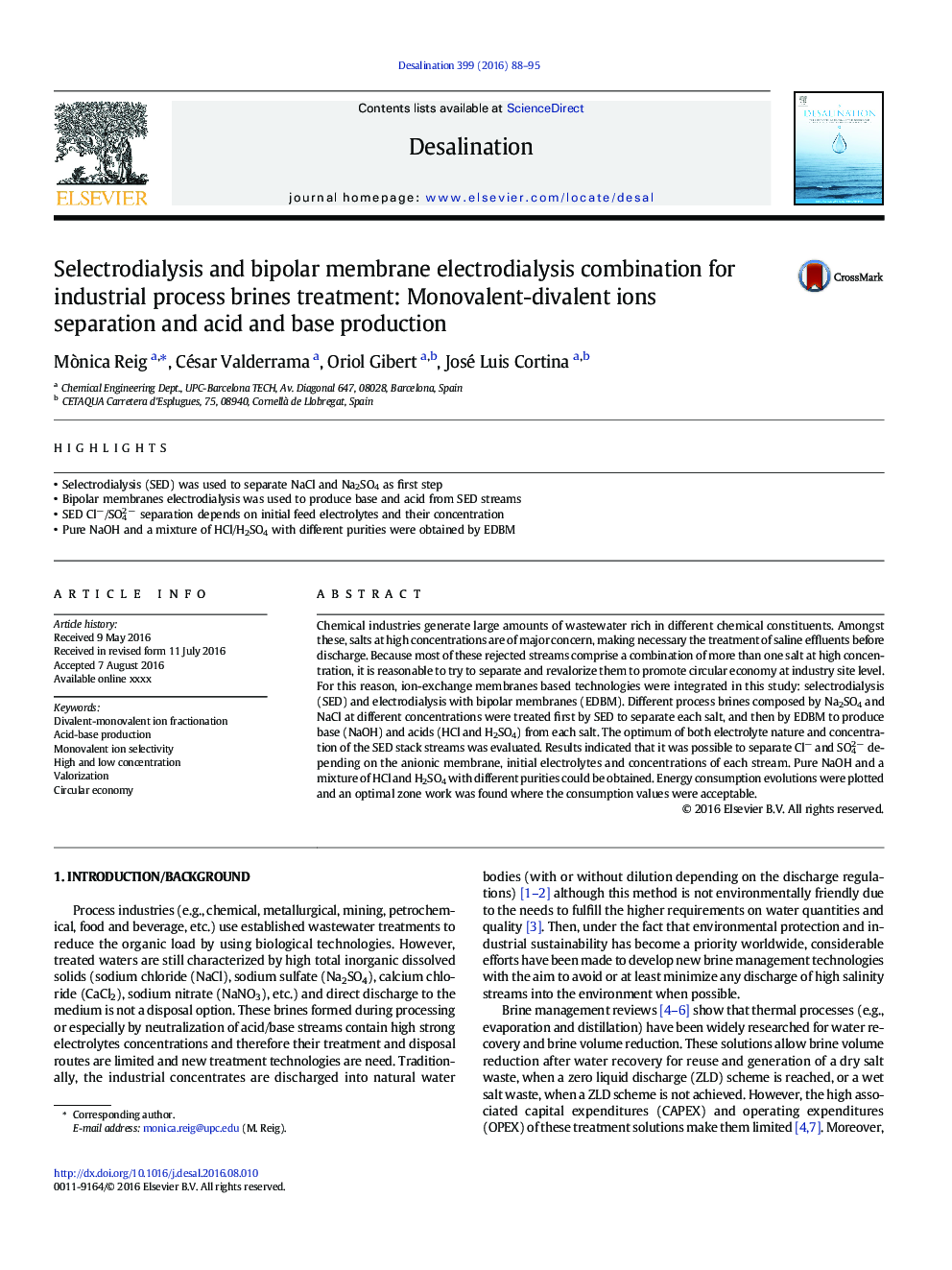| Article ID | Journal | Published Year | Pages | File Type |
|---|---|---|---|---|
| 7008156 | Desalination | 2016 | 8 Pages |
Abstract
Chemical industries generate large amounts of wastewater rich in different chemical constituents. Amongst these, salts at high concentrations are of major concern, making necessary the treatment of saline effluents before discharge. Because most of these rejected streams comprise a combination of more than one salt at high concentration, it is reasonable to try to separate and revalorize them to promote circular economy at industry site level. For this reason, ion-exchange membranes based technologies were integrated in this study: selectrodialysis (SED) and electrodialysis with bipolar membranes (EDBM). Different process brines composed by Na2SO4 and NaCl at different concentrations were treated first by SED to separate each salt, and then by EDBM to produce base (NaOH) and acids (HCl and H2SO4) from each salt. The optimum of both electrolyte nature and concentration of the SED stack streams was evaluated. Results indicated that it was possible to separate Clâ and SO42Â â depending on the anionic membrane, initial electrolytes and concentrations of each stream. Pure NaOH and a mixture of HCl and H2SO4 with different purities could be obtained. Energy consumption evolutions were plotted and an optimal zone work was found where the consumption values were acceptable.
Keywords
Related Topics
Physical Sciences and Engineering
Chemical Engineering
Filtration and Separation
Authors
Mònica Reig, César Valderrama, Oriol Gibert, José Luis Cortina,
